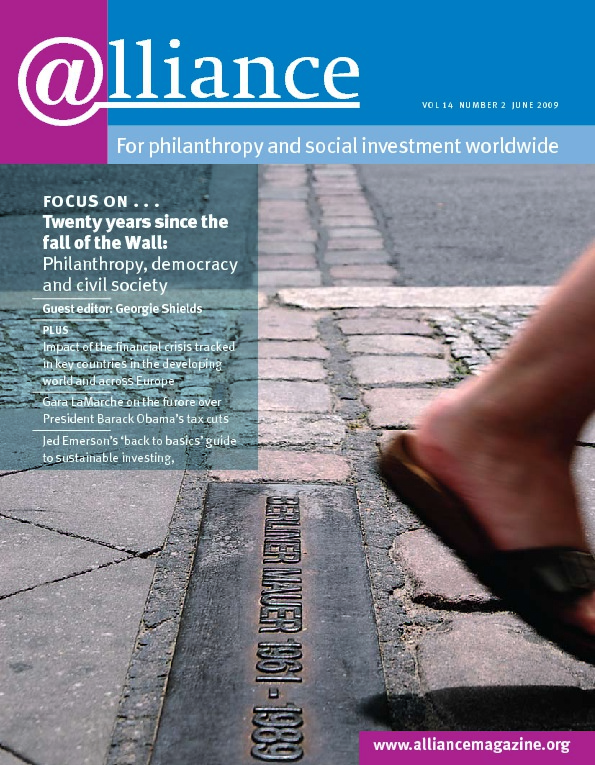Hats off to Alliance for its March 2009 ‘focus’ piece on the merits of an ‘either/or’ approach for social investors and philanthropists who seek to address important global challenges. The authors do a commendable job of arguing the relative strengths of such approaches to admittedly difficult questions, eg whether (1) public policy advocacy or (2) direct action is the more effective approach to addressing global warming.
While a discussion of the ‘right approach’ to any of the five issues could easily comprise an entire issue of Alliance, my gentle quarrel is with the piece’s premises.
Questionable Premise 1: We have moved from an era of ‘abundance’ to one of ‘scarcity’. While philanthropic capacity is indeed diminished, there is still a tremendous amount of social capital in play around the globe, and an incalculable amount that has yet to be tapped. In the near term, social investors may all need to dig deeper to keep valuable programmes alive. But while there may be ‘less abundance’, social capital is not ‘scarce’.
Questionable Premise 2: We are confronting a brave new world that we barely recognize, one in which growing need and resource scarcity demands radically new thinking. But are we? Social need has always vastly outstripped available philanthropic and social resources. Difficult choices are hardly new in this realm.
Questionable Premise 3: The ‘both/and’ approach to addressing critical challenges has seen its day and thoughtful donors will be obliged to choose between, eg, policy advocacy and direct action on climate change. Hardly. Many social investors will continue successfully to imagine, design, and implement multiple approaches to important social challenges.
Dis-assemble the straw men above and TPI’s 20-year model of advising donors on strategic social investing remains as sound as ever: emphasize values, do your research, define a focus, be clear about goals, develop a theory of change, create effective strategies, be willing to take informed risks, define expected outcomes, and be clear about the dimensions of success. And if one strategy fails to deliver the desired result, experiment with another.
There is, to be sure, plenty of room in effective philanthropy for ‘either/or’ choices. But to set such a paradigm at odds with ‘both/and’ approaches is a false dichotomy.
Stephen P Johnson
Vice President, The Philanthropic Initiative


Comments (0)